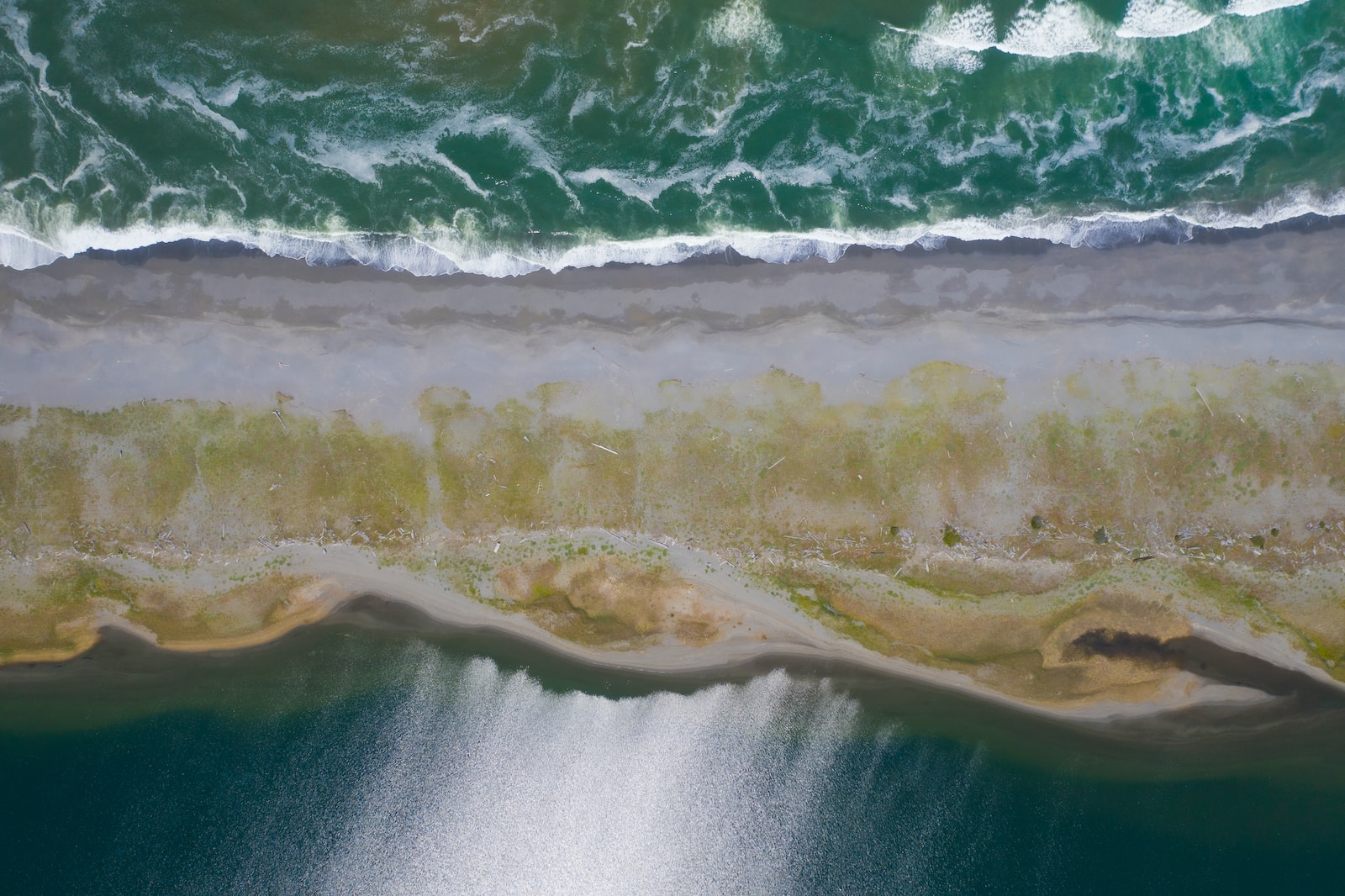Water is one of the most essential resources for life on earth. However, not all water is the same. Freshwater and saltwater are two distinct water types that have different characteristics and play unique roles in our ecosystem. It is crucial to understand the differences between them to appreciate their significance fully.
Freshwater and saltwater have different salinity levels, sources, and distribution. While freshwater is found in lakes, rivers, glaciers, and groundwater, saltwater is primarily found in oceans and seas. In this article, we will explore the differences and similarities between freshwater and saltwater ecosystems, their environmental impacts, and their significance for human life.
Key Takeaways
- Freshwater and saltwater are two distinct water types with different characteristics.
- Understanding the differences between them is essential to appreciate their significance fully.
- Freshwater is found in lakes, rivers, glaciers, and groundwater, while saltwater is primarily found in oceans and seas.
What Defines Freshwater and Saltwater?
Freshwater and saltwater are the two main categories of water bodies on our planet. While they share certain similarities, there are fundamental differences that set them apart. Understanding these differences is crucial for comprehending their ecological significance and their impact on human life.
Freshwater is defined as containing less than 1% salt concentration. It is generally found in rivers, lakes, and underground aquifers. The majority of the Earth’s freshwater is locked in glaciers and ice caps, with only a small portion easily accessible for human consumption and use.
Saltwater, on the other hand, has a salinity level of 3.5% or more. It is mainly found in oceans and seas, covering approximately 71% of the Earth’s surface. The salinity of saltwater can vary depending on location, temperature, and other factors.
The key differences between freshwater and saltwater stem from their distinct sources and distribution. Freshwater is largely sourced from precipitation and surface runoff, and its distribution is affected by factors such as climate, topography, and land use. Saltwater, on the other hand, is mainly derived from the oceans and seas, subject to tides and currents that influence its distribution and mixing.
Exploring Similarities Between Freshwater and Saltwater
While freshwater and saltwater may differ in many ways, they also share several similarities that are critical to life on our planet. Let’s take a look at some of these similarities:
- Nutrient cycling: Both freshwater and saltwater ecosystems play crucial roles in nutrient cycling. They provide habitats for microorganisms that convert dead organic matter into essential nutrients that can be reabsorbed by living organisms.
- Biodiversity: Both water types support an incredible diversity of life. From tiny plankton to massive whales, freshwater and saltwater habitats host countless species that depend on clean water to survive and thrive.
- Human activities: Humans rely on both freshwater and saltwater for a range of activities, including fishing, transportation, and recreation. Water also plays a critical role in agriculture, manufacturing, and energy production.
It’s clear that both freshwater and saltwater are essential resources on our planet. While they may differ in their chemical composition and ecological characteristics, they are both critical to supporting life on Earth.
Environmental Impact of Freshwater and Saltwater
Freshwater and saltwater environments differ significantly in their physical and chemical properties, resulting in diverse ecological impacts on aquatic and terrestrial ecosystems.
Distinction between Freshwater and Saltwater: While freshwater bodies have low salinity levels, typically less than 0.5 ppt (parts per thousand), saltwater bodies have high salinity levels, usually above 35 ppt. This fundamental difference in composition affects the distribution and survival of aquatic organisms and the functioning of ecosystems.
| Impact | Freshwater | Saltwater |
|---|---|---|
| Contamination | Contamination from various sources, including pollutants from agricultural runoff, industrial discharges, and municipal wastewater, can reduce water quality and harm aquatic life. | Oil spills, sewage leaks, and other human activities can cause severe contamination of saltwater environments, threatening marine life and public health. |
| Salinity levels | Changes in salinity can significantly affect the physiology and behavior of freshwater organisms, reducing their survival and growth rates. | High salinity levels can cause desiccation, dehydration, and net water loss in marine organisms, leading to physiological stress and death. |
| Habitat loss | Human activities, such as dam construction and water diversion, can destroy or alter essential freshwater habitats, reducing the biodiversity of these ecosystems. | Coastal development, overfishing, and climate change can destroy marine habitats, including coral reefs, seagrass beds, and mangroves, threatening the survival of many species. |
| Water availability | Water scarcity is a significant problem in many regions, affecting human health and livelihoods and limiting agricultural and industrial activities. | Despite the abundance of saltwater bodies, access to clean and safe drinking water is a global challenge, affecting millions of people worldwide. |
Overall, freshwater and saltwater bodies play crucial roles in supporting biodiversity, nutrient cycling, and climate regulation, highlighting the need for effective management and conservation efforts to protect these valuable resources.
Freshwater vs. Saltwater: Which is More Abundant?
When it comes to the availability and distribution of freshwater and saltwater, there is a significant difference. While saltwater covers around 71% of the Earth’s surface, freshwater only accounts for 2.5% of the total volume of water on the planet. Furthermore, of that 2.5%, almost 70% is locked away in glaciers and ice caps, leaving only a small fraction available for human use.
The imbalance between freshwater and saltwater resources becomes even more pronounced when we consider their distribution. While most saltwater is concentrated in oceans and seas, freshwater is scattered unevenly across the planet. Some areas, particularly in arid regions or islands, have limited access to freshwater, while others have abundant sources.
These differences underscore the importance of careful management practices to ensure that freshwater resources are not only sufficient but also sustainably utilized. Without proper measures to preserve and protect freshwater resources, there is a significant risk of future water scarcity, and the consequences could be dire for both ecosystems and human communities.
Understanding freshwater and saltwater is crucial to promote sustainable water management practices. By recognizing these differences, we can work towards the preservation and conservation of these vital resources and ensure that future generations have access to clean and safe water.
Freshwater and Saltwater in Human Life
Freshwater and saltwater are essential resources for human life, playing critical roles in various sectors such as agriculture, industry, and domestic use.
Did you know? Although saltwater covers about 97% of the Earth’s water, only 2.5% of it is freshwater. Of that, over two-thirds of it is locked up in ice caps and glaciers, making it inaccessible for human use.
Drinking Water Supply
Access to clean drinking water is crucial for human survival. According to the World Health Organization, over two billion people lack access to safe drinking water sources. Both freshwater and saltwater can be treated to remove contaminants and provide safe drinking water. However, the cost of desalination technology for saltwater is higher compared to freshwater treatment, making freshwater a more viable option for many regions worldwide.
Agriculture
Both freshwater and saltwater are used for irrigation in agriculture. However, freshwater is the primary source of irrigation water, accounting for about 70% of global usage. The dependence on freshwater for agriculture has put pressure on freshwater resources, leading to overuse and depletion in many regions.
Industries
Saltwater is used in various industries such as the production of salt, soda ash, and chlorine. It is also used to cool thermal power plants and in oil drilling operations. Freshwater is used in industries such as food processing, paper production, and chemical manufacturing. However, freshwater scarcity has led to increased competition for water resources, causing concerns about the sustainability of industrial operations.
Recreational Activities
Both freshwater and saltwater are popular for recreational activities such as swimming, fishing, and boating. Freshwater lakes and rivers provide habitat for various fish species, while saltwater bodies host marine life such as sharks, whales, and dolphins. However, pollution and overuse of these water bodies have led to the decline of many aquatic species and degradation of water quality in many regions.
In conclusion, freshwater and saltwater play critical roles in human life. However, their different characteristics and availability have implications for their use in various sectors. Understanding the distinction between freshwater and saltwater is essential for sustainable management practices and the preservation of these vital resources for future generations.
Impacts of Climate Change on Freshwater and Saltwater
The effects of climate change on freshwater and saltwater systems are becoming increasingly evident. Rising temperatures, altered rainfall patterns, and melting ice caps have significant implications for water quality, ecosystems, and human populations.
One of the most pressing issues arising from climate change is sea level rise. As global temperatures continue to increase, glaciers and ice caps are melting, causing sea levels to rise. This affects both freshwater and saltwater ecosystems by altering salinity levels, flooding coastal habitats, and exacerbating storm surges.
Changes in temperature and precipitation patterns are also affecting the availability of freshwater resources. Warming temperatures cause more evaporation, reducing the amount of available freshwater. Changes in rainfall patterns can also lead to droughts, further limiting freshwater supplies.
These changes are already having significant impacts on aquatic organisms, such as fish and other marine life. Species that rely on specific water temperatures, salinity levels, or other environmental conditions face significant challenges as these conditions shift. The impacts of these changes can ripple throughout entire ecosystems, affecting everything from plankton to top predators.
Human populations that depend on freshwater and saltwater resources for food, drinking water, transportation, and tourism are also at risk. Rising sea levels can displace communities and damage infrastructure along coastlines, while changes in freshwater availability can affect everything from agriculture to industrial production.
Overall, the impacts of climate change on freshwater and saltwater ecosystems are complex and far-reaching. Understanding these changes is essential for developing effective strategies to mitigate their impacts and promote the sustainable management of these vital resources.
Conclusion
Understanding the differences between freshwater and saltwater is crucial for the preservation of our environment and the continuity of our life. Both types of water bodies have unique characteristics that are essential for supporting biodiversity and providing ecosystem services.
It is important to recognize the challenges associated with freshwater scarcity and the need for sustainable management practices to ensure adequate access to this vital resource. By promoting awareness and implementing effective measures, we can contribute to the conservation of these valuable resources.
Freshwater versus Saltwater
While freshwater and saltwater systems differ in various ways, they are both integral to human life. Freshwater is used for drinking, agriculture, and industries, while saltwater supports fisheries and other marine-based activities. It is vital to recognize the significance of both systems and promote their sustainable management.
Overall, the distinction between freshwater and saltwater is vital for our understanding of our environment and the role we play in its preservation. By fostering awareness and promoting responsible water management practices, we can ensure that these resources continue to support life on earth for generations to come.
FAQ
Q: What is the difference between freshwater and saltwater?
A: Freshwater and saltwater differ primarily in their salinity levels. Freshwater has a low concentration of dissolved salts, while saltwater has a high concentration of salt.
Q: What defines freshwater and saltwater?
A: Freshwater is typically sourced from rivers, lakes, and groundwater, while saltwater is found in oceans and seas. The key defining factor is the level of salinity present in the water.
Q: What are the similarities between freshwater and saltwater?
A: Both freshwater and saltwater ecosystems play vital roles in supporting biodiversity and nutrient cycling. They are also essential for human activities such as agriculture, drinking water supply, industries, and recreational activities.
Q: What is the environmental impact of freshwater and saltwater?
A: Changes in salinity can have significant impacts on aquatic organisms and land ecosystems. Additionally, human communities that rely on freshwater and saltwater for various purposes can be affected by changes in water quality and availability.
Q: Which is more abundant, freshwater or saltwater?
A: Saltwater is more abundant globally, as oceans cover approximately 71% of the Earth’s surface. Freshwater, on the other hand, is relatively scarce, with only a small fraction of the world’s water being freshwater.
Q: How do freshwater and saltwater affect human life?
A: Freshwater and saltwater are crucial for agriculture, drinking water supply, industries, and recreational activities. Understanding and protecting these resources is essential for sustaining human life and promoting a healthy environment.
Q: What are the impacts of climate change on freshwater and saltwater?
A: Climate change can lead to rising sea levels, altered rainfall patterns, and changes in temperature, all of which have implications for water quality, ecosystems, and human populations dependent on freshwater and saltwater resources.
 Skip to main content
Skip to main content


